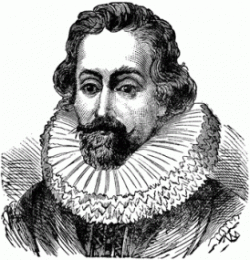Spanish King Ferdinand II called him “El Draque.” Others spoke of “Francis the Dragon.” Born a British farmer’s son in 1544, Francis Drake rose to infamy by age 23. At 36 he cemented his name among history’s immortals. It was said of Drake that “people of quality dislike him for having risen so high from such a lowely [sic] family; the rest say he is the main cause of wars.”
A merchant navigator, Drake’s badass rise began in 1567 when the Spanish Armada ambushed him and his cousin off the Mexican coast. Escaping only with his life, Drake vowed revenge. Upon return to England, Queen Elizabeth commissioned Drake as a privateer—giving him license to plunder the Spaniards at will. Captaining two small ships, he captured the Panamanian port city of Nobre de Dios in 1573. Though wounded in the siege, Drake pushed on to plunder 20 tons of Spanish silver and gold.
Infamous, Queen Elizabeth tapped Drake for an immortal challenge: in 1577 he set out with three ships to circumnavigate the globe. In today’s small world of jet-liners and luxury cruisers, it’s hard to grasp the magnitude of what Drake’s task. Consider the only other captain to circumnavigte—Magellan—died in the attempt.
Francis Drake wouldn’t die so easily.
During the three year voyage, Drake survived a mutiny attempt, an attack by Chilean natives and several bruising storms. Near Ecuador, he captured the richest ship in the Spanish fleet—the Cacafuego—and plundered “unimaginable wealth.” Drake returned to England a hero on Sept 26th, 1580. Queen Elizabeth promptly knighted him. Spain’s King Phillip put a $6.5 Million* bounty on his head.
Drake, deciding he wasn’t badass enough, went on to single-handedly destroy the Spanish Armada. In 1585 he captured the Spanish Galleon Rosario and reverse engineered the ship. He discovered its hull vulnerable at close range and its heavy artillery too cumbersome against faster, lighter ships. With this knowledge, Drake and the British navy ravaged the Armada: of the 151 ships set to invade England, only 67 survived to flee back to Spain.
Drake died of dysentery while privateering in 1595. As per his request, Drake was buried at sea in full battle armor. Treasure divers have recently found Drakes ships near the Panamanian coast, sparking hopes that Sir Francis Drake—privateer, circumnavigator, naval genius and historical badass—may soon receive the burial his due.
Sources:
http://www.tudorplace.com.ar/Bios/FrancisDrake.htm
Cummins, John. Francis Drake: The Lives of a Hero. Palgrave Macmillan, 1996
Coote, Stephen. Drake. London: Simon & Schuster UK, 2003.
http://www.bbc.co.uk/news/uk-15447632
*inflated to current monetary value.

